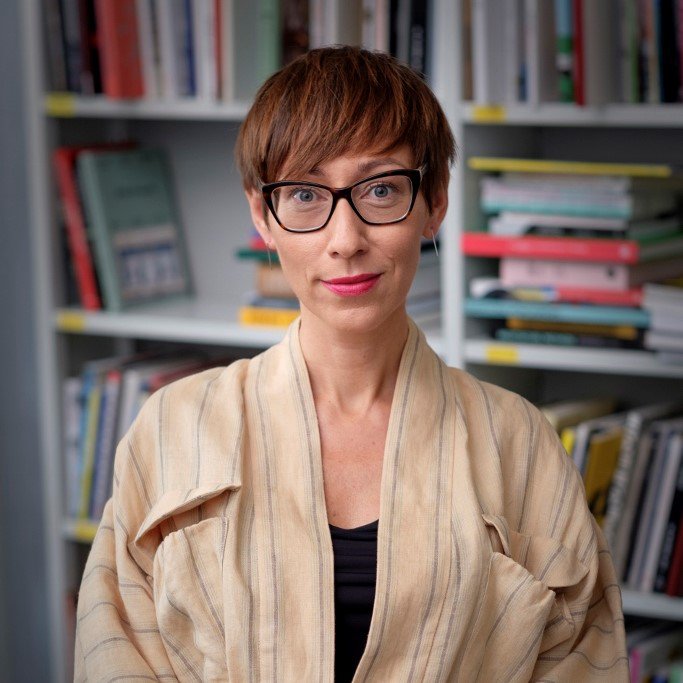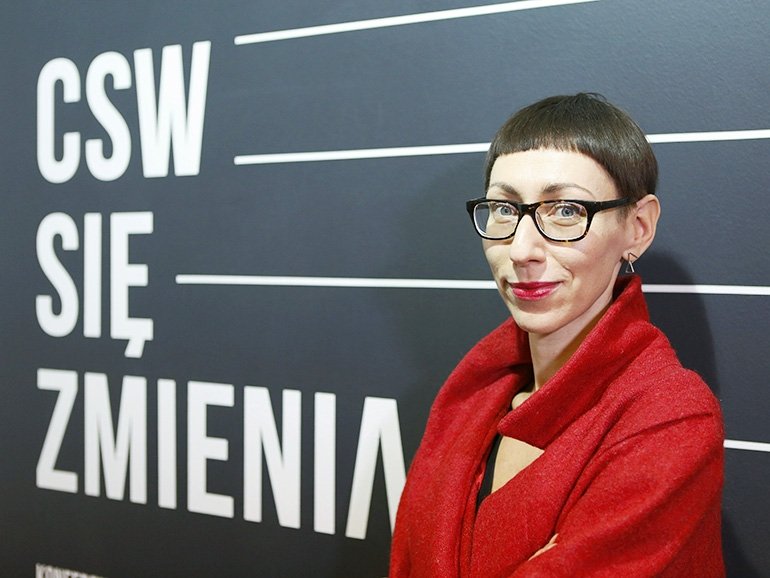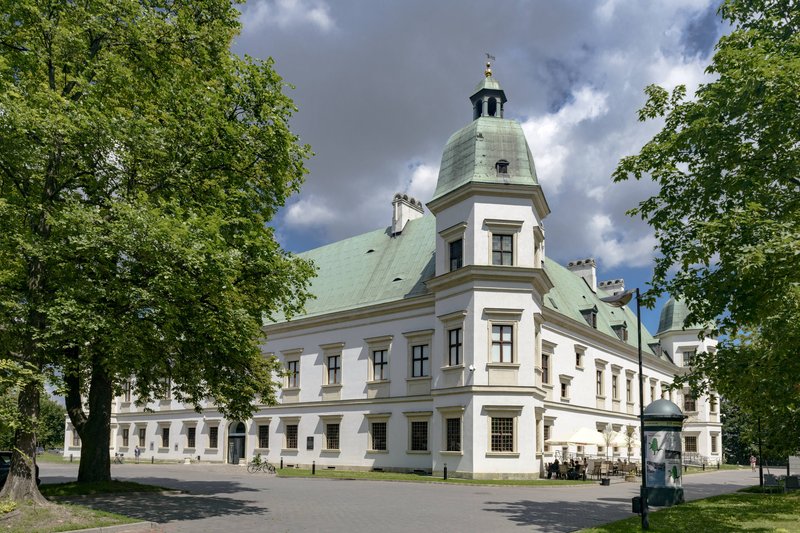"If you start weakening art institutions, you’re putting Poland’s whole cultural scene at risk"

Interview with Malgorzata Ludwisiak by Jules Eisenchteter for Kafkadesk. Originally published Kafkadesk, 3 February 2020.
This week, Kafkadesk spoke with Malgorzata Ludwisiak, an art historian, former journalist and one of Poland’s most prominent art curators. Director of the Centre for Contemporary Art (CCA) in Warsaw from 2014 to 2019, one of the most respected cultural institutions in Poland, Malgorzata Ludwisiak was replaced last December by Poland’s Culture Minister in a move critics fear was politically motivated.
You previously worked as a journalist and held several important positions in Lodz. Can you tell us a bit about your background?
Indeed, as a young art historian I started working for a few years as an art critic, collaborating with several Polish titles and as a journalist in the cultural section of the biggest Polish newspaper Gazeta Wyborcza, working on my Ph.D. in the meantime. In 2006, I was asked by a newly established Lodz Art Center to be the director of the second edition of the International Lodz Biennale. That was a huge task to do in a short time but sounded exciting and I agreed. The following year, I initiated the first design festival in Poland – Lodz Design, again organized in the Lodz Art Center. This is how my managing and curating practice has started.
After working for some time as a freelance curator and academic teacher, Jaroslaw Suchan, the director of Muzeum Sztuki, invited me in 2008 to join him as his deputy, which I was for 6 years. It was a fascinating experience and a privilege – contributing to one of the oldest modern art museums in the world (established in 1931), being a part of the huge shift that the museum was going through at that time and working with an amazing team. In 2014, when an international competition for a position of the director of the Ujazdowski Castle CCA in Warsaw was announced, I decided to participate. And that’s how my adventure with another important Polish institution – the oldest contemporary art center in the country – started for more than 5 years.
Can you tell us a bit about the changes you introduced to the Centre for Contemporary Art since you took over in 2014?
Well, it’s hard to tell in a few words… First, I would like to underline that it was not only my individual effort, but a collective one and that many great people contributed to this change: an artistic director Jaroslaw Lubiak, a deputy Urszula Kropiwiec, a very sensitive and bold curatorial team and the rest of a highly dedicated staff. It would be a long list of people to name.
The major change introduced to the institution was to better define its identity by questioning, after almost 30 years of the CCA’s existence, the role of contemporary art today. The major part of the new program was focused on tracing the processes of globalization – on how they shape our lives, local economies and art itself, and some of their consequences, like the come-back to nationalistic politics or the climate emergency. It was also important for us to ask the question regarding the place and role of Poland, or more broadly of Central and Eastern Europe, within an intricate network of global flows.
Contemporary art is a great tool to help us understand the world and we tested this tool in many different ways. The other part of our program was a radical experimentation: with a cross-over between performance, visual arts and literature, with exhibition formats and institutional boundaries… This is what has been making this institution important since 1989: intellectual curiosity, pushing the boundaries of contemporary art, being an agent of a real change, both critical and engaged. What we did was to redefine and update this radicalism to 2016 or 2019.
Over a few years time, the CCA in Warsaw started partnering with major West- and East European, Middle-Eastern and Asian cultural institutions. In 2019, our institution was invited – as the only one from Central and Eastern Europe – to the network “L’Europe des Musées” launched by the Centre Pompidou in Paris. But the internationalization of the CCA was not the only measure of our success. For instance, public attendance and the number of visitors rose by 40% during the past 5 years. I think that it was the greatest reward for me, as well as for the whole team.

Both as a former journalist and as head of a prominent cultural institutions, has there been any notable changes in Poland’s cultural scene since 2015?
The cultural scene in Poland is still doing very well because there are lots of fantastic artists here! But if you look at the politics of the cultural scene – yes, there is a notable change. There has been a number of replacements of directors of important institutions and museums across the country. And there is also a notable shift in the way public money is redistributed, going more and more to folk or folk-inspired culture and historical exhibitions rather than to contemporary art and culture.
What are the biggest challenges for Poland’s cultural sector today? And its main strengths?
What I have just told about removing experienced and competent heads of leading art institutions and melting public money for contemporary art production are among the major challenges. We, art professionals, have spent the last 20-30 years in Poland on building stable, meaningful and reliable cultural institutions which have started to be a part of important international networks and have played a huge role in supporting Polish artists and promoting them worldwide. So if you start weakening art institutions through destabilizing them, shifting their focus, suddenly changing directors or simply by not giving them a proper financial support, not only are you ruining decades of work but you are putting the whole cultural and art scene at risk.
In Poland, artists mostly rely on public funds and public institutions. If one starts to shake this delicate structure, the consequences might be hard to imagine, but very dangerous. There is also one more thing which is put in danger: public trust. Cultural professionals in Poland have spent a lot of time and energy over the past years focusing on educational programs, creating platforms for open debate, encouraging the broader public to visit modern art museums and contemporary art centers. This newly born and still fragile relationship between the public and art institutions is also at stake when confronted with a mistrust of contemporary art openly expressed by politicians today and when undermined by the growing destabilization of the museum sector.
If you ask me about the strengths, I would say that these are great artists, great art professionals, a lot of great contemporary art… But these strengths are in a way still weak and fragile and need to be protected and catered to. In the European tradition, it’s still the state and public funds that provide this protection.
Can you tell us a bit about your work as one of the board members of CIMAM, the International Committee for Museums and Collections of Modern and Contemporary Art?
The board of CIMAM is doing a lot of extremely important job for the modern and contemporary art museum sector worldwide. It’s not only formulating the discourse on current challenges of museums which are, for example, a raising wave of populist politics or environmental change, but also reacting to emergencies – when professional standards or freedom of expression are in danger. For example, the CIMAM board has been very closely involved during last months in the case of Aichi Triennale in Japan, which exemplified the danger of political pressures and censorship attempts. In January, we also published an open letter in defense of the Museu de Arte do Rio (MAR) which suddenly found itself in a critical financial situation. The letter is urging the City Government to continue its support for the museum.
Right now, we have started working on the shape and scope of CIMAM’s 2020 Annual Conference which – interestingly – is going to take place in… Poland, for the first time since the 1960s. Muzeum Sztuki in Lodz and a just-to-be-opened NOMUS museum in Gdansk will be hosting hundreds of museum professionals from around the globe in November. I think that it’s really crucial that this conference is happening in Poland at this precise moment.

You appealed the Culture Minister’s recent decision not to renew your contract: at what stage is the case now?
The Minister has nominated his own candidate and took over the CCA in early January 2020.
According to you, what motivated his decision? Is it linked to some of the previous exhibitions and programs you curated at the CCA?
Well, it’s hard to say since we actually never met… So there was no possibility for a decent conversation.
More broadly speaking, do you think Poland’s cultural and artistic freedom is in danger today?
Unfortunately, there are some signs for that… Trying to turn the CCA in Warsaw into a “right-wing contemporary art center” might be seen as one of the symptoms.
Related Articles
→ Artnet, 4 February 2020, Poland’s Museums Are Taking a Radically Conservative Turn—and the Fight Over Who Gets to Control Them Is Only Beginning